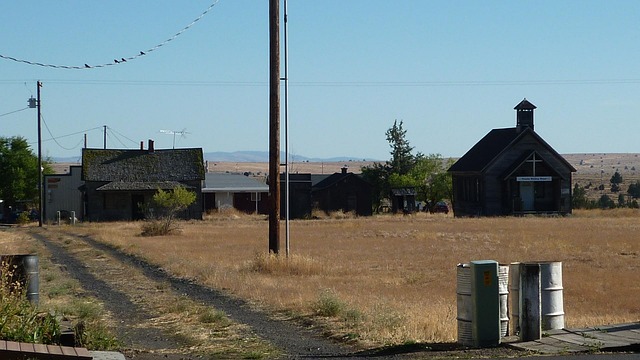In the 1920s, Lane County, Oregon, experienced a dramatic cultural and economic shift due to nationwide Prohibition. The 18th Amendment banned alcohol, leading to the rise of speakeasies and bootleggers while local authorities enforced laws against an underground economy. This era in Lane County reflects both the challenges of prohibition and its unintended consequences, leaving a captivating historical legacy marked by daring exploits and violent clashes.
“Explore the fascinating history of Lane County, Oregon during the Prohibition era through a lens of legal challenges and social dynamics. From the rise of speakeasies and underground drinking spots to the influence of the Temperance Movement, this period was marked by secretive bootlegging operations and intense legal battles. Discover how Oregon’s enforcement strategies shaped—or failed to shape—public morality, and delve into the complex web of prohibition laws in Lane County.”
- The Rise of Prohibition in Lane County
- – Historical context leading up to the prohibition era in Lane County, Oregon.
- – The impact of national prohibition laws on local communities.
- Oregon Speakeasies and Underground Operations
The Rise of Prohibition in Lane County

In the early 20th century, Lane County, Oregon, found itself at the heart of a nationwide debate that would forever change the way Americans consumed alcohol—the Prohibition era. The push for temperance had been gaining momentum for decades, fueled by concerns about the social and economic impacts of alcoholism. By 1919, with the ratification of the 18th Amendment, alcohol production, distribution, and sale became illegal across the United States, including Lane County. This marked a significant shift in the region’s cultural and economic landscape, giving rise to a clandestine world of speakeasies and bootleggers that flourished in the shadows of the law.
Lane County’s history during this period is a microcosm of the national struggle. Local communities faced complex challenges as they grappled with enforcing prohibition laws while addressing the societal issues that underpinned the movement. The temperance movement, once a force for reform, became a catalyst for criminal activity and underground networks. Oregon’s law enforcement agencies played a critical role in navigating this labyrinthine landscape, striving to combat bootlegging operations and protect the public from unsafe, illegally produced alcohol.
– Historical context leading up to the prohibition era in Lane County, Oregon.

In the early 20th century, Lane County, Oregon, like much of the United States, was shaped by the rising tide of the temperance movement. This grassroots effort, fueled by concerns about alcohol’s social and moral impact, led to a significant push for national prohibition in 1918. The 18th Amendment to the U.S. Constitution banned the “manufacture, sale, transportation, importation, exportation, and use of intoxicating liquors.” In Lane County, as elsewhere in Oregon, this legal shift marked a dramatic turn in social and economic dynamics. Local communities, previously home to bustling saloons and thriving liquor industries, faced a new reality as prohibition laws took effect. The era that followed, known as the Prohibition era, brought unique challenges and opportunities, with underground speakeasies popping up to quench the thirst of those seeking alcohol, while law enforcement in Lane County played a crucial role in enforcing these strict new regulations.
– The impact of national prohibition laws on local communities.

The national Prohibition laws, enacted in 1920, had a profound impact on local communities across the nation, including Lane County, Oregon. While the goal was to curb alcohol consumption and promote temperance, the unintended consequences often led to a flourishing underground economy. Speakeasies popped up like mushrooms in urban areas, offering clandestine gatherings for those seeking a drink. In Lane County, as in many places, these hidden bars became hotbeds of social interaction and rebellion against the law, fostering a unique local culture that blended secrecy and camaraderie.
The Prohibition era brought about significant challenges in law enforcement. Oregon’s dry laws were met with resistance from bootleggers who found creative ways to smuggle and sell illegal alcohol. Lane County sheriff’s deputies and federal agents engaged in high-stakes cat-and-mouse games, attempting to disrupt the supply lines and shut down speakeasies. This period was marked by both daring escapades and violent confrontations, shaping a chapter in the county’s history that continues to fascinate historians and enthusiasts of the era.
Oregon Speakeasies and Underground Operations

In Lane County, as in much of Oregon during the Prohibition era, the fight against alcohol sales and consumption took on a life of its own. Despite federal laws banning the production and sale of alcoholic beverages, determined residents and businesses found ways to keep speakeasies and underground operations thriving. These clandestine establishments became hotspots for socializing and revelry, offering a glimpse into the vibrant but illicit nightlife that blossomed in the shadows of the law.
Oregon’s Speakeasies served as more than just places to quench one’s thirst; they were symbols of resistance against the rigid temperance movement. Lane County, with its diverse landscape and robust communities, became a microcosm of the national debate over prohibition. Local law enforcement faced an uphill battle against determined bootleggers who operated under the cover of darkness, showcasing the complex dynamics between public morality, personal freedom, and the underground economy during this tumultuous period in American history.
